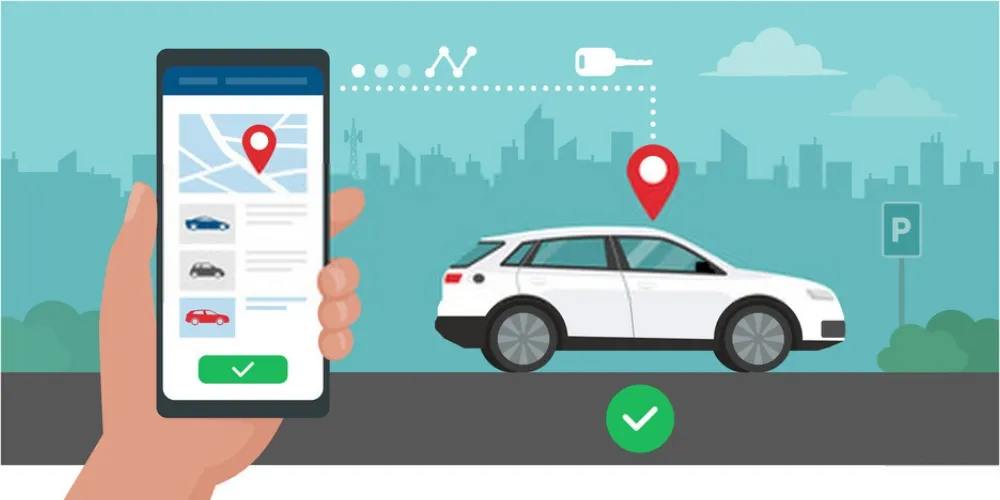1. Introduction
A Taxi Dispatch System is a software solution that automates the process of managing taxi fleets, enabling efficient allocation of taxis to passengers. These systems are vital in the modern transportation industry, providing streamlined operations, improving customer satisfaction, and increasing profitability. This article will explore the evolution, key features, benefits, challenges, and future of taxi dispatch systems.
2. The Evolution of Taxi Dispatch Systems
Historical Context
The first taxi dispatch systems were rudimentary, relying on radio communication between drivers and a central dispatch office. These systems had limited capabilities and often led to inefficiencies.
Technological Milestones
With the advent of GPS technology, taxi dispatch systems began to evolve, allowing for real-time tracking of vehicles. The introduction of mobile apps further revolutionized the industry, enabling on-demand bookings and real-time communication.
Current Trends in Dispatch Technology
Today, taxi dispatch systems are highly sophisticated, incorporating AI-driven algorithms, real-time data analytics, and integration with various payment systems. These advancements have made the dispatch process more efficient and customer-centric.
3. Key Features of a Taxi Dispatch System
Automated Booking
Modern dispatch systems automate the booking process, allowing customers to book taxis through mobile apps or websites without the need for human intervention.
Real-Time GPS Tracking
Real-time GPS tracking enables dispatchers to monitor the location of each vehicle, ensuring timely pickups and efficient route management.
Driver and Fleet Management
These systems provide tools for managing drivers and vehicles, including scheduling, maintenance tracking, and performance monitoring.
Payment Integration
Integrated payment systems allow for seamless transactions, supporting multiple payment methods and ensuring secure processing.
Customer Communication Tools
Communication tools within the dispatch system facilitate real-time updates to customers, such as estimated arrival times and driver information.
4. How Taxi Dispatch Systems Work
Backend Infrastructure
The backend infrastructure of a taxi dispatch system includes servers, databases, and APIs that handle data processing, storage, and communication between different components.
Dispatch Algorithms
Dispatch algorithms are the core of the system, determining the most efficient way to allocate taxis based on factors like proximity, traffic conditions, and driver availability.
Integration with Other Systems
Taxi dispatch systems often integrate with other systems, such as payment gateways, GPS services, and customer relationship management (CRM) tools, to provide a seamless experience.
User Interface and Experience
A well-designed user interface is crucial for both customers and drivers, ensuring ease of use and accessibility across different devices.
5. Benefits of Implementing a Taxi Dispatch System
Efficiency and Cost Savings
Automating the dispatch process reduces manual errors, saves time, and lowers operational costs by optimizing resource allocation.
Enhanced Customer Experience
By providing real-time updates and convenient booking options, taxi dispatch systems enhance the overall customer experience, leading to higher satisfaction and retention rates.
Increased Safety and Security
With features like driver tracking and emergency alerts, these systems contribute to the safety and security of both passengers and drivers.
Scalability and Flexibility
Taxi dispatch systems are scalable, allowing companies to expand their operations without the need for significant additional investment. They also offer flexibility in customizing features to meet specific business needs.
6. Challenges in Implementing Taxi Dispatch Systems
Technical Barriers
Implementing a taxi dispatch system can be technically challenging, especially for companies with limited IT infrastructure or expertise.
Cost Considerations
The cost of acquiring, customizing, and maintaining a taxi dispatch system can be significant, particularly for small and medium-sized enterprises.
Adoption by Drivers and Customers
Ensuring adoption by drivers and customers is critical. This often requires training, incentives, and ongoing support to overcome resistance to change.
Regulatory and Compliance Issues
Taxi dispatch systems must comply with various regulations, including data protection laws and transportation industry standards, which can complicate implementation.
7. Case Studies
Successful Implementation in Major Cities
Several major cities have successfully implemented taxi dispatch systems, resulting in improved efficiency, reduced wait times, and increased customer satisfaction. For example, New York City's taxi system has been transformed by the adoption of an advanced dispatch system.
Lessons Learned from Failures
Not all implementations are successful. Some cities have faced challenges due to inadequate planning, poor technology choices, or resistance from stakeholders. These failures offer valuable lessons for future implementations.
8. Future of Taxi Dispatch Systems
Emerging Technologies
Emerging technologies like AI, machine learning, and blockchain are expected to further enhance taxi dispatch systems, making them more intelligent, secure, and efficient.
Integration with Autonomous Vehicles
As autonomous vehicles become more prevalent, taxi dispatch systems will need to evolve to manage these new types of vehicles, including coordination with human-driven taxis.
Potential Market Growth
The market for taxi dispatch systems is expected to grow significantly, driven by increasing urbanization, demand for on-demand transportation, and advancements in technology.
Predictive Analytics and AI
Predictive analytics and AI will play a key role in the future of taxi dispatch systems, enabling predictive maintenance, demand forecasting, and personalized customer experiences.
9. Choosing the Right Taxi Dispatch System
Key Factors to Consider
When choosing a taxi dispatch system, companies should consider factors like cost, scalability, ease of use, and the level of customer support provided by the vendor.
Vendor Comparison
Comparing vendors based on features, pricing, and customer reviews can help in making an informed decision. It's also important to assess the vendor's track record in the industry.
Customization and Scalability Options
Customization options allow companies to tailor the system to their specific needs, while scalability ensures that the system can grow with the business.
10. Conclusion
Taxi dispatch systems have become a critical component of modern transportation, offering numerous benefits to both operators and customers. While there are challenges in implementation, the advantages far outweigh the drawbacks. As technology continues to advance, taxi dispatch systems will become even more integral to the transportation industry. Companies looking to stay competitive should carefully consider investing in a robust, scalable dispatch system that meets their specific needs.



